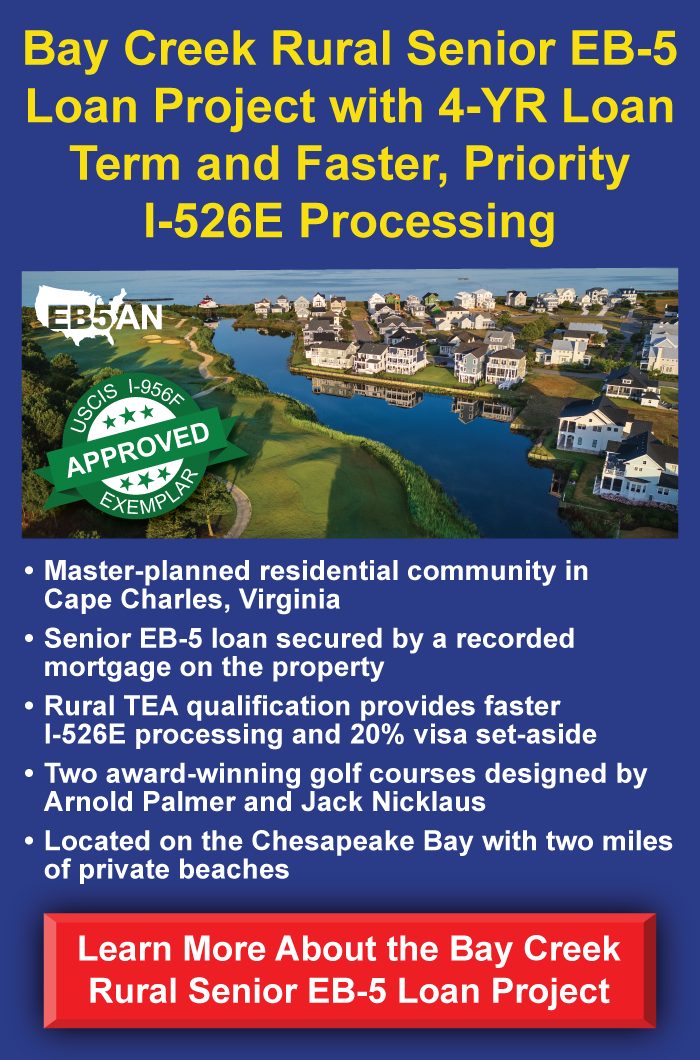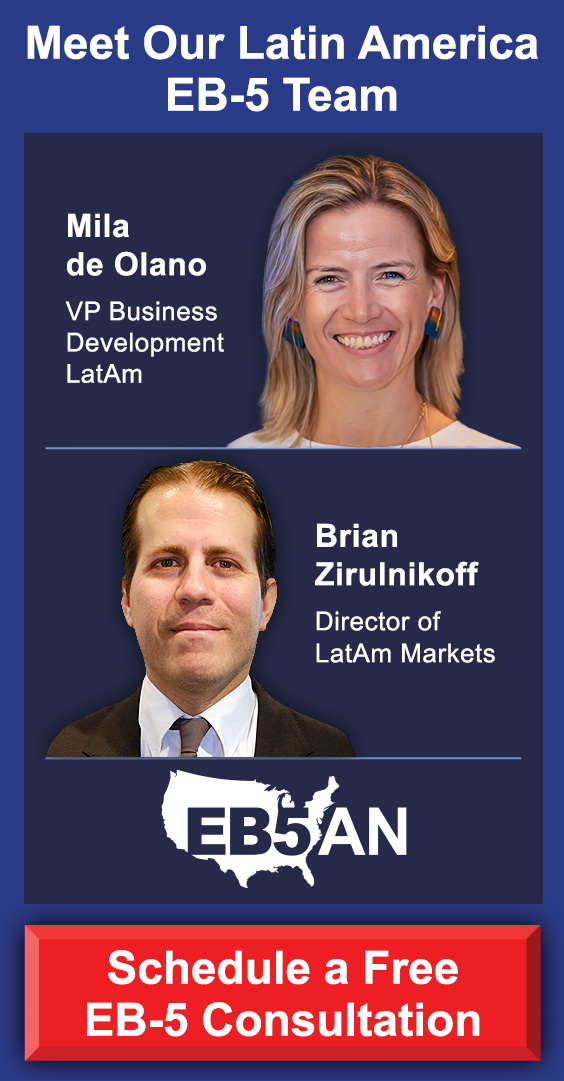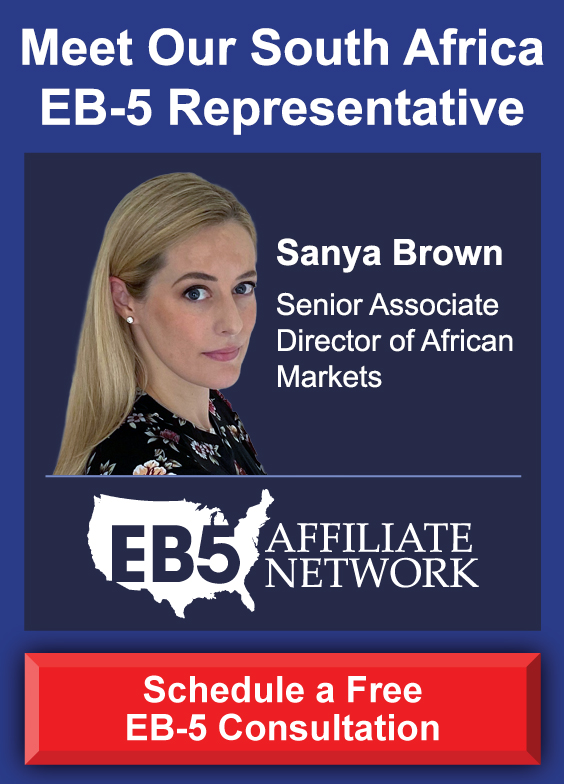For so many of us—including Indians like myself—immigrating permanently to the United States is one of our top goals. The career opportunities, higher education for our children, and long-term stability the U.S. offers simply can’t be found elsewhere.
That’s why I recently made an EB-5 investment, which will put me in line for a U.S. Green Card. In a short time, my family and I could become permanent residents of the U.S thanks to the Bay Creek rural EB-5 project.
The only practical way for us to reach this goal was through the EB-5 Immigrant Investor Program.
If that’s your goal as well, I hope this article will be helpful to you as you plan your immigration journey through EB-5—which I consider the best way to escape the uncertainty of temporary visas and build your life in the U.S.
Watch Kishore’s Full Interview
Watch Kishore’s Interview Highlights
Read the Full Transcript of Kishore’s Interview
My Background and Why I Chose EB-5
Finding an Immigration Attorney and Filing My I-526E
Choosing a Regional Center and EB-5 Project: My Strategy
Why I Chose EB5AN’s Bay Creek Rural Project
Final Thoughts
My Background and Why I Chose EB-5
I moved to the United States from India in 2016 on an L-1A visa through a company transfer. Later, I changed to an H-1B visa. I’ve been living here for about nine years now, working as a software engineer for the same company the entire time. My work life has been stable, but I’ve always known that the immigration path through H-1B is long and uncertain. My Green Card priority date is from 2018, and based on what people say, it might take more than ten years—some even say hundreds. I don’t see it happening any time soon.
I have a son, and one of my biggest goals is for him to study here in the U.S. That’s one of the main reasons I decided to move forward with the EB-5 program. I realized that waiting endlessly in the EB-2 line wouldn’t give my family the stability we need. With EB-5, I can secure permanent residency for all of us much sooner.
Another big reason is independence. My wife is also on an H-1B visa, and she wants to start her own business. But with H-1B, it’s always complicated—getting work authorization (EAD), renewing it, depending on an employer for sponsorship—it all creates a lot of uncertainty. Through EB-5, once we get our Green Cards, we won’t need to rely on our employers. My wife can open her business freely, and I can also explore new paths. I’ve spent many years in software, and maybe in the future, I’ll want to do something different, maybe start something of my own. EB-5 gives us that flexibility.
I had already gone through different visa categories. I started on L-1B, and it’s not easy to move to L-1A after that. Then I switched to H-1B, but that didn’t change the long-term picture. So when I looked at my options, there weren’t many. It was either stay in the endless EB-2 queue or take the EB-5 route. For me, EB-5 was the only real option to build a secure future for my family.
I first heard about EB-5 back in 2021 or 2022, but I didn’t pay much attention at that time because of the backlog. It seemed too slow, and I thought it wouldn’t work for me. Then I started hearing about the new rural and high-unemployment EB-5 categories, where you could get faster processing. That caught my attention. A few months ago, maybe three or four months back, I started watching videos about EB-5. I found a lot of information online from EB5AN—especially on YouTube. The content was detailed and clear, and I learned that rural projects could help you get your Green Card much faster.
That’s when I really started thinking seriously about it. Once I understood that I could invest in a qualified rural project and shorten the waiting time, I knew it was the right step. That’s how I decided to invest in the Bay Creek rural senior EB-5 loan project. It made sense for me and for my family’s long-term plans.
Finding an Immigration Attorney and Filing My I-526E
After I made up my mind to move forward with EB-5, the first thing I did was start looking for a good immigration attorney who had experience with EB-5 cases. I had watched many EB5AN videos, and they explained that finding the right attorney is the most important first step. Once I understood that, I began researching and talking to attorneys who specialized in this area. After finalizing my decision to go ahead, we began reaching out to regional centers and learning more about the available projects.
During my search for attorneys, I spoke with three or four of them. I didn’t want to waste time talking to too many. The EB5AN videos helped me understand what kind of questions I should ask and what signs to look for in a good attorney. I wanted someone who was very responsive, someone I could talk to directly and get a quick reply from. For me, communication was very important. Based on that, I decided to go with Anahita George. I saw that she had been working with EB5AN for a long time and had handled many EB-5 cases. She seemed very professional and confident in what she was doing, and that made me feel comfortable.
Working with Anahita was a very smooth process. From start to finish, it took us about four weeks to complete everything related to my source of funds and filing preparation. EB5AN’s online videos had already helped me collect several documents in advance, so we were able to move quickly once we started. Of course, a few things came up that I hadn’t thought of, like missing documents related to property sales, but nothing was too difficult to fix. Overall, the process went faster than I expected, and I was very satisfied.
What stood out most to me was Anahita’s responsiveness. Even if I messaged her late at night—sometimes at 10 p.m.—she would reply right away or early the next morning. That gave me a lot of confidence. She explained every step in detail and made sure I understood what was happening and what documents were still needed. She also explained why certain proofs were required, which helped me understand how strict the source of funds rules are.
For example, I had sold a property within the last five years, and I thought the purchase and sale statements would be enough to show the transaction. But she explained that we needed more: documents from the bank showing how the payment came from my income and how the transfer was made. I had to go to the bank and request additional records, but it made sense after she explained it. She was very detailed, and she didn’t skip over anything. That kind of thoroughness is important because EB-5 filings require a lot of documentation.
If I were to give advice to anyone else on an H-1B visa thinking about EB-5, I’d say first find an attorney who has deep experience with EB-5 cases. This is not like regular immigration paperwork. You need someone who has handled many of these filings before. Second, try to choose an attorney who personally answers your questions instead of passing you off to a paralegal or assistant. When you can communicate directly, it saves a lot of time and avoids confusion.
Another tip is about preparing your investment funds. The EB-5 process moves faster than you might think once you decide to go ahead. In my case, I already had around $600,000 ready, but I needed another $200,000, which I had to pull out by selling some shares. That took time. So it’s better to have the full $800,000 ready in one place before you begin. That way, when your attorney tells you it’s time to transfer the money, you can do it immediately without any delay.
Choosing a Regional Center and EB-5 Project: My Strategy
When I started looking for a regional center, I did what most people do—I searched everywhere. I used ChatGPT, xAI, Gemini, and other tools to read reviews and feedback. I wanted to find a regional center with a strong record of success and projects that had already led investors to receive their Green Cards. After checking all the sources, I found that EB5AN consistently had the best reputation. Their projects had a long history of completion and approval, and investors had successfully received their Green Cards. That was the main reason I decided to go with EB5AN.
Before choosing, I still wanted to compare. I spoke with four or five regional centers. Some were fine, but others raised concerns. A few refused to share all the project documents up front, and that was a red flag for me. In some cases, the projects were not yet fully approved or were still in very early stages, like waiting for environmental permissions. I didn’t feel comfortable with projects where the situation was uncertain or where the developer couldn’t prove that everything was in place. I realized that when you make an EB-5 investment, it’s not enough just to find a project that sounds good—you need to check that the regional center behind it has a clear record of success and full transparency.
EB5AN was completely different. From the very first time I contacted them, they shared all the project information without hesitation. Everything was also available publicly on their website, which showed me that they had nothing to hide. All the details were laid out clearly—job creation numbers, financial structure, developer background, and timelines. I could even take those details and analyze them using tools like ChatGPT or xAI to understand risks or possible complications. When I had questions, I reached out to Mike from EB5AN, and he was always patient and calm. He explained every point clearly and made sure I understood each part of the project. That level of communication and openness gave me a lot of confidence.
When it came to selecting the project itself, I had a few clear priorities. The first was that it had to be a rural project, because I wanted to qualify for faster processing. That was a major factor for me. The second was job creation. I wanted to be certain that the project was creating enough jobs so that all investors would qualify for their Green Cards without any risk. That’s the whole point of EB-5—to create jobs. The third thing I looked for was a shorter investment term. I wanted a project where my funds would be tied up for a smaller duration compared to others, not ten or twelve years. The fourth priority was project stability and success potential—things like a good location, a reputable developer, and a product that made sense in the market.
Between rural and urban options, I clearly preferred rural. The main reason is that USCIS gives priority processing to rural EB-5 projects. That means they review and approve rural applications faster than others. Also, 20% of all EB-5 visas are reserved specifically for rural investors, so the chances of getting a Green Card sooner are higher. Urban projects might sometimes offer shorter fund terms, but they don’t come with the same processing speed or reserved visa benefit. I wanted to avoid waiting years for approval. For me and my family, getting our conditional Green Cards quickly was the goal. That’s why I decided on a rural project—it offered both faster approval and a stronger position in the visa queue.
Why I Chose EB5AN’s Bay Creek Rural Project
Bay Creek immediately stood out to me as a beautiful project with a long history. It has been under development for years, and many parts are already built. The golf course is operational, and the area is active and growing. I liked that it was near the water, with natural surroundings that made it visually appealing. Even if I were not an investor, it’s the kind of place where I would personally want to live. That was my first thought when I saw it.
The second reason I was drawn to Bay Creek was its clear and realistic timeline. The project was planned for completion in four years, with the possibility of a one-year extension—five years total. That timeframe made sense to me and felt stable.
When I compared Bay Creek to other rural projects, several things made the others less comfortable. I also looked at environmental factors. Some projects had not yet received the required building approvals, which added uncertainty.
Those were the main reasons I chose Bay Creek.
Final Thoughts
For Indian investors already in the U.S. on EB-2 or EB-3 visas, especially if their priority dates are after 2015, I strongly recommend considering the EB-5 program. The Green Card wait time through EB-2 or EB-3 is extremely uncertain, and no one really knows when approvals will come. If you have decided that you want to build your life in the U.S., it makes sense to move forward with EB-5 instead of waiting endlessly in the backlog.
When choosing an EB-5 project, the most important thing is to make sure the project is creating enough jobs. That is the main requirement for getting your Green Card approved. You should also look for a regional center that has already completed multiple successful projects and has a strong record of delivering results. Always review the project details carefully and talk openly about risks with your attorney. A good attorney can help you identify possible issues and explain whether a project is safe.
I highly recommend my attorney, Anahita George. She is extremely responsive and professional. Even if I sent her a message late at night, she would reply quickly. She works very fast and starts preparing your filing as soon as you begin sending documents. You don’t need to have everything ready at once—she keeps building the file as your paperwork comes in. She made the entire process simple and efficient.
I also recommend EB5AN to other investors. They are doing an excellent job and have a lot of useful information available on YouTube and their website. You can reach out to Sam or Mike directly, and they will respond quickly and clearly. They have deep experience in EB-5, and their guidance made the whole process smooth and transparent for me.







